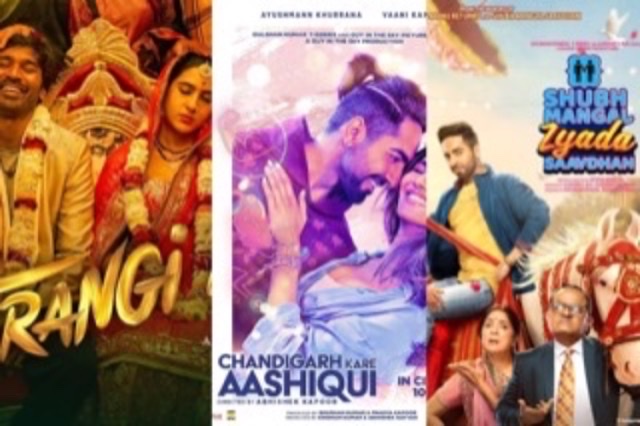
Shaista Fatima/New Delhi
With a paradigm shift in the concept of cinema, movies like Atrangee Re, Chandigarh Kare Aashiqui, Shubh Mangal Aur Savdhan have started speaking about the less talked issues revolving around Mental Health and Queer Community.
While Harry M. Benshoff and Sean Griffin, in their book Queer Cinema: the film reader, elaborate three general criteria for identifying cultural products as queer: Auteurs, Forms, and Reception. Mental health advocates have mostly blamed the media for promoting stigma and discrimination toward people with a mental illness, but in the recent shift the media is an important ally in challenging public prejudices, initiating public debate, and projecting positive, human interest stories about people who live with mental illness.
Atrangee Re talked about the impact of Post Traumatic Stress Disorder, Chandigarh Kare Aashiqui brought up the concept of trans men and trans women, Badhai Do talked about marriage of convinience between two Queer couples. Psychiatrist Jasmeet Kaur, known for her Shaman healing when asked as to how cinema depicts society says, "cinema is a reflection of the society.
It encapsulates very beautifully the conditions and opportunities within which the society is currently functioning.." She says that cinema captures a strata of society more in depth and with greater accuracy. On the recent trends in the cinema, she says, "The best shift that I can see in the recent times is bringing about subjects of gravity through the means of entertainment. It is done with grace and ease where the subject matter is portrayed with finesse and sensitivity, keeping the entertainment quotient intact…"
She says, "the movies mentioned above highlight the minority starta of the society which would perhaps never get the tag of being "normal", which is unfair to say the least. As a psychologist, I can tell you with definite certainty that these people are no different than anyone else and share the same cultural values, goals, aspirations, fears and moments of happiness like everyone else… " Comedy and satire have always been a favorite among filmmakers when talking about grave issues, yesteryear movies like "Page 3", "Kal Ho Na Ho", "Gangster", "Judgemental Hai Kya", slightly graced the issues, in comical or serious ways. But today these issues seem to have found 'comedy' as their saviour, the concepts are spoken with much more prominence, the recent movies try to keep a parallel with comedy and seriousness to say the "less explored".
ALSO READ: Is comedy a preferred genre in telivision and theatres?
Jasmeet says, "Comedy and satire are the best media to put across a topic of such gravity. Though they may be far from gaining acceptance from the traditionalists and conservative people of the community, at least they are seen and it does give them a platform to show up as they are, without hiding…" She says, "Given the fact that the film industry moves by economics, it is normal for them to add more drama and make it more "sellable."
ALSO READ: Legendary comic artist Neal Adams who drew Batman dies at 80
It is a question of a delicate sea-saw balance to be maintained by the filmmakers. Humour is a subtle yet strong way to present sensitive topics like these and make a foot in the door entry.." She says that it is important to keep the essence of the portrayal intact and not diminish it into mockery. She says that most filmmakers are doing well by adhering to the newness yet keeping the dignity intact.
